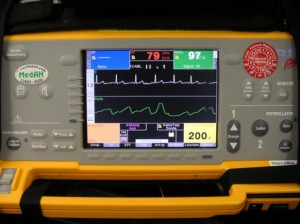Medical Grade Monitors Compared With Commercial Grade Monitors

We are familiar with computer monitors – we see them almost everywhere we turn. There are LCD monitors at home at offices where we work. However, not many of us know that there are medical grade monitors designed specifically for use by physicians and other health professionals. These monitors are often used to view images taken through mammograms, ultrasound, magnetic resonance imaging (MRI), computer axial tomography (CAT) scans, chest and bone imaging, etc. Because they are used in medical diagnosis, medical grade monitors are of higher quality than commercial off-the-shelf LCD monitors. This article discusses the latest in medical displays.
The Main Differences
Medical grade monitors have much higher resolutions than their commercial counterparts. This is because professionals who rely on medical monitors, such as radiologists for example, need to view the clearest and sharpest image possible in order to come up with correct interpretations. The subtle changes in color which indicate lesions and other anomalies are not as easily seen through commercial LCD screens.
To make the images sharper, medical grade monitors are capable of displaying more colors. Commercial LCD screens often have the ability to display as much as 16.7 million colors. Medical grade monitors can display much more than that; up to 1.074 billion colors in total. The additional colors displayed allow greater image accuracy. Doctors, surgeons, and radiologists are therefore confident the image they are basing diagnosis and medical procedure guidance from is the sharpest possible.
What enables the display of such a large number of colors is a system that supports 10-bit per color. Bit output is a measure of the number of RBG signals the monitor and the computer it is connected to can process. It is also important to note that to be able to display such clear images through monitors, the digital file, the video card, the operating system, the software, and the monitor itself must support the high resolution required.
One other feature that is unique to medical grade monitors is automated backlighting. In commercial LCD monitors you have to tweak the ‘brightness’ control periodically to get the optimum image clarity. Medical monitor displays have control circuits built in to maintain stable peak brightness from initial start up to the time when the monitor is fully warmed up. Thus the images displayed on medical grade monitors are consistently at the optimum level of luminance.
Monitors approved for medical service have to comply with government requirements such as on the maximum current leakage. As they will be normally used in a hospital setting, the chassis of medical grade monitors are often coated with chemical agents that prevent the growth of microorganisms.
Recent Developments
Technology has advanced sufficiently that the difference is image clarity between commercial and medical grade monitors have significantly narrowed. Some medical professionals now consider using commercial grade monitors to view less complex images such as those from magnetic resonance imaging (MRI), ultrasound (US), and computed tomography (CT).
With the rapid pace of technological advances, the image quality on commercial monitors may soon equal those used for medical purposes.
